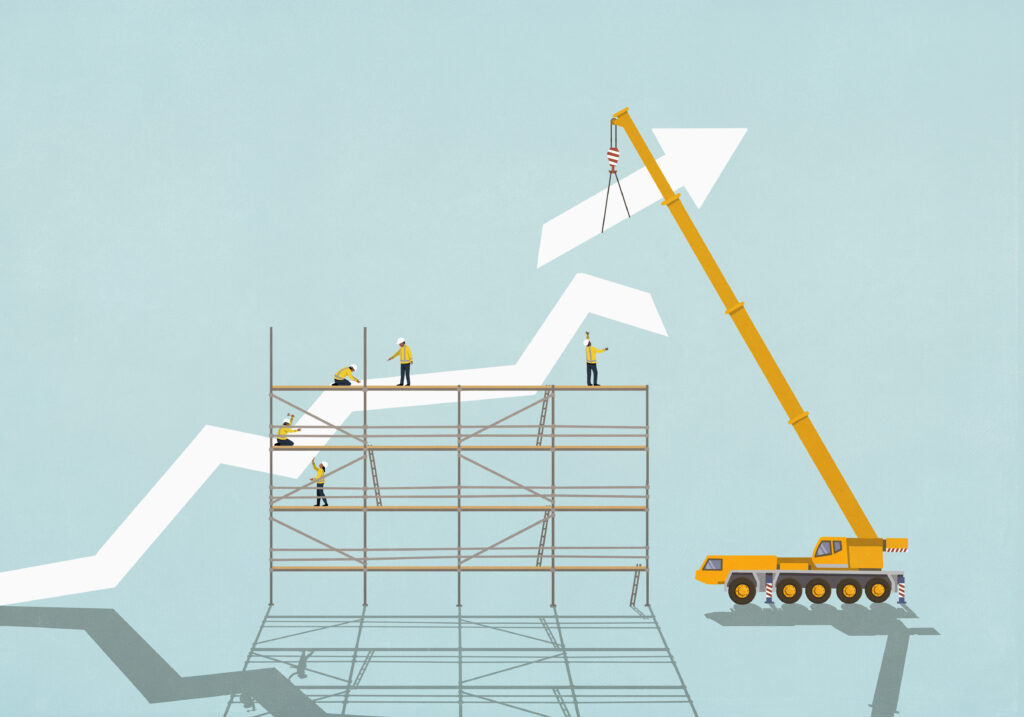

The Trump administration’s announcement in April that it would levy tariffs against dozens of nations ignited sell-offs in stock markets across the world and raised fears of a global recession.
President Donald Trump says the 10% baseline tariffs on imported goods are necessary to counter other nations’ unfair trading practices. While the administration’s overall tariff plan has remained in flux, Trump has not backed off the baseline policy even as stock markets plunged for several days and nations such as China announced their own tariffs against the United States in response.
Past the immediate impact, the tariff wars in the early days of the Trump administration will pull businesses relying on supplies in Canada, Mexico, China, and elsewhere into the fray. Uncertainty over long-term pricing and product availability has “an immediate muting impact on investment decisions,” according to Mark McLeod, U.S. political risk and structured credit practice leader for Marsh.
“One of the significant implications of long-term business planning, whether you’re looking at supply chains or where to set up your operations or tax planning or energy policy, really most of those enterprises require some degree of certainty before you can be making decisions,” he says.
Beyond increases in the cost of general consumer goods, tariffs will affect insurance products through higher prices for repairing and building structures destroyed by storms or fire and repairing motor vehicles with imported parts, says Robert Hartwig, an associate professor of finance and director of the Risk and Uncertainty Management Center at the University of South Carolina.
Indeed, about 30% of softwood lumber used in the United States annually is imported from Canada, according to the National Association of Home Builders. And about six out of 10 auto replacement parts used in U.S. auto repair shops are imported from Mexico, Canada, and China, says the American Property Casualty Insurance Association, a trade group that represents home, auto, and business insurers.
Ultimately, the tariffs could have a major impact on commercial auto premiums, which have already risen to problematic levels for policyholders. In the fourth quarter of 2024, commercial auto premiums increased for the 54th consecutive quarter at an average of 8.9%, up from 8.5% in the preceding quarter, according to The Council of Insurance Agents & Brokers’ P/C Market Survey. Research from other organizations, including AM Best, shows that claim frequency and severity for the line have already increased due to driver shortages, repair costs, and supply chain issues.
Multiple other segments of the insurance industry will be affected, including business interruption and the marine market. In a February report, Munich Re stated, “Key concerns include insured value inflation, cargo value accumulation, demurrage costs, and heightened theft risks—factors that can significantly impact insurance coverage and risk management strategies.”
The Trump administration has also signaled it will impose “major” tariffs on imported pharmaceuticals, MSN.com reported. Since the United States imports large quantities of both finished pharmaceuticals and active pharmaceutical ingredients (APIs)—82% of APIs come from India and China, according to The US Pharmacopeia Medicine SupplyMap—tariffs on pharmaceuticals, which Trump said would be “at a level that you haven’t really seen before,” could result in sharp increases in drug costs, exacerbating the employee benefits market’s struggles with already high drug prices. Experts also predict pharmaceutical tariffs will rekindle severe drug shortages, especially for generics, as the high tariff costs force generic manufacturers out of the U.S. market, according to Vox reporting from February 2025.
Updating coverage limits is critical to cover tariff-related costs, Munich Re says. For example, a shipment of electronics, previously insured for $5 million, may now require coverage at $6.5 million. Additional risk exposure lies in the need to procure higher surety bonds on imports and to ensure adequate coverage against potential supply chain disruptions that can lead to costly port delays and cargo accumulation.
The COVID-19 pandemic spurred many companies to prepare for disruptions to supply chains, but not everyone has adapted. “We all discovered the vulnerabilities that creep into the system around those elongated supply chains,” McLeod says. “While there have been significant efforts in onshoring and nearshoring over the last few years, particularly since COVID, that’s a very long term and complex process.”




